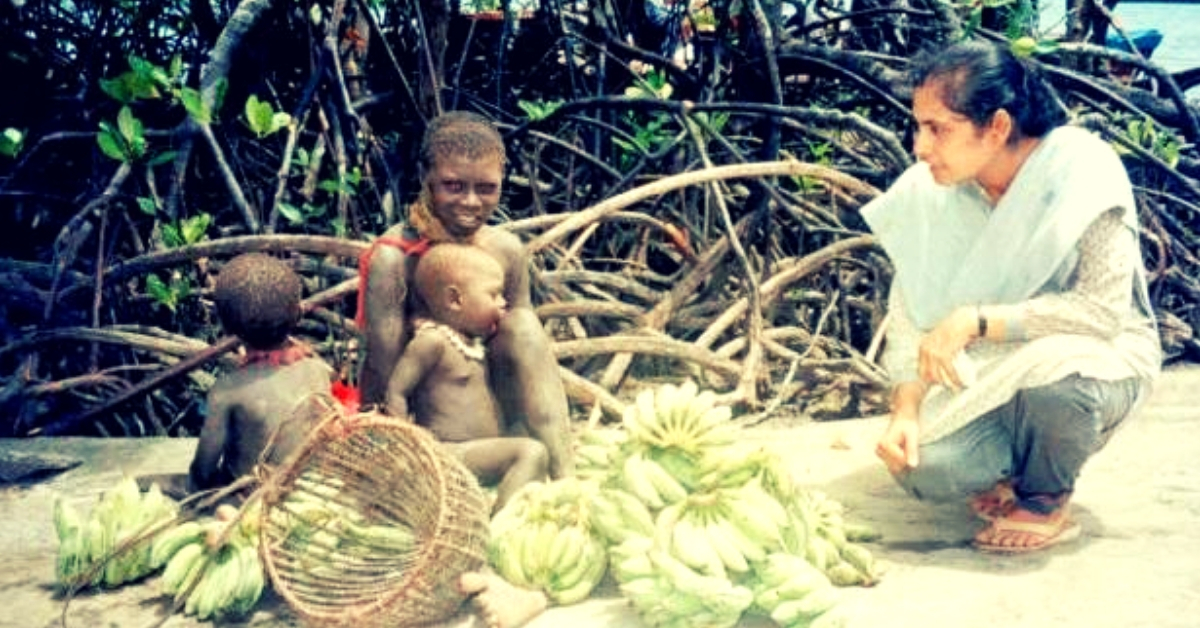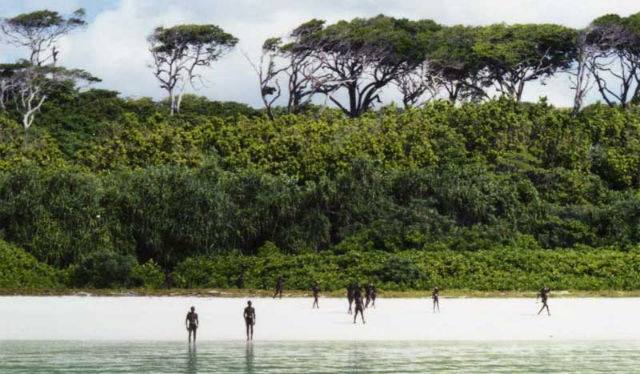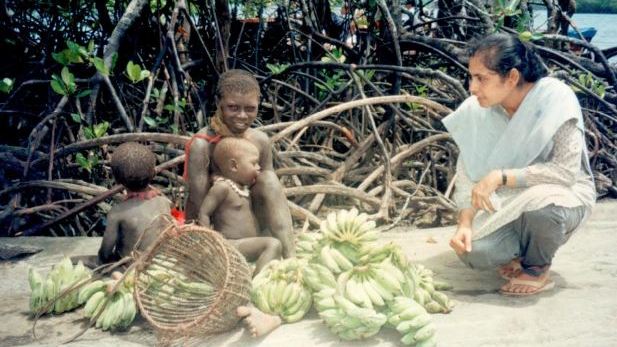Meet the Indian Woman Behind the World’s First Friendly Contact with the Sentinelese
"The Sentinelese and other tribes don’t need to be oppressed with religion, because doing so will make them more hostile. They understand nature, and that’s all they need."

Madhumala Chattopadhyay is a senior research officer with the Ministry of Social Justice and Empowerment today. But on January 4, 1991, she was the first woman anthropologist to establish friendly contact with the traditionally hostile Sentinelese tribe in the North Sentinel Island in the Andamans, 1200 km off the coast of the Indian mainland.
Nowadays, there is a feeling that this tribe is violent and dangerous. However, the actions of Chattopadhyay prove – this is far from the truth.
Living in the North Sentinel Island for an estimated 60,000 years, the Sentinelese are among the most genuinely isolated tribes in the world.
Also Read: ‘Hostile’ Sentinelese? Here’s What the First Anthropologist to Meet Them Says
However, for Madhumala, the only woman in the expedition which arrived close to the shores of North Sentinel island on January 4, 1991, the experience of establishing contact with the Sentinelese didn’t end in an attack or hostility.
“Never ever in my six years of doing research alone with the tribes of Andamans did any man ever misbehave with me. The tribes might be primitive in their technological achievements, but socially they are far ahead of us,” she told this Bengal publication back in 2015.
Madhumala’s fascination with the tribes of the Andaman & Nicobar Islands began as a 12-year-old when she came across a news clipping at her home in the Shibpur suburb of Kolkata talking about the birth of a child among the nearly-extinct Onge tribes.
After successfully navigating university studying anthropology, she applied for a PhD fellowship to the Anthropological Survey of India for conducting field research in these remote islands.
With very few Indian women in the field, however, there were fears in the committee overseeing Madhumala’s application that it may not be safe for her to conduct research in these islands.
A solution came when the committee asked Madhumala’s mother to sign an undertaking that the ASI would not be liable in the event something unfortunate happened to her during research.
Willing to further her daughter’s dream, Madhumala’s mother Pronoti Chattopadhyay signed the dotted line. For the next six years, she conducted research on the tribes of the Andamans.

As explained in this article, initial attempts at contact with the Sentinelese by the ASI in the 1970s were met with hostility, not a surprise since past attempts were by British colonialists – who were brutal and dangerous.
Fast forward to January 4, 1991.
The MV Tarmugli dropped its anchor near the southwest part of the North Sentinel Island.
From there a crew of 13 were taken on a small boat to the island. As they made their approach, that’s when officials and researchers on the boat first sighted the Sentinelese – some of them armed with bows and arrows.
The visiting party took the initiative of dropping coconuts in the water. Suddenly, a small group of Sentinelese approached them on a canoe and took the offering.
However, it’s when the 13-member team came back with a second set of coconuts for the Sentinelese when something remarkable happened.
First, the Sentinelese reached the visiting party’s boat, touched it and collected the coconuts directly. Then a young Sentinelese on the shore had his bow and arrow targeted at the visiting party.
“As the marksman was about to release, a Sentinelese woman standing nearby gave a push to the marksman, and the arrow missed its mark and fell harmlessly in the water. The woman had done that on purpose, thus saving the contact party from severe injury or even death,” says this Probashi profile.
Seeing a woman in the visiting party, one could posit that the Sentinelese now believed them to be non-threatening. Following the incident, Madhumala got into the water and began handing over coconuts in person.
This was history in the making. The first peaceful contact between Sentinelese and outsiders triggered by the presence of a woman. The Sentinelese are known to be fiercely protective of their women. Madhumala would subsequently visit again on February 21, and this time her team were received with welcoming arms.
However, the Government of India stopped such interactions, fearing the spread of an epidemic among the Sentinelese. A sensible decision at the time, considering what has happened to another tribe in the Andamans the Jarawas.

The government has since then established a 3-mile no-entry zone around these islands.
On the recent killing of American missionary John Allen Chau, Madhumala brings a unique and much needed perspective.
“But it’s not like they attack first-off, they show warning signs — through facial gestures, knives, bows and arrows — and then take action if those are disrespected. John Allen Chau must have faced a similar situation,” she told The Print.
Moreover, she is at pains to explain how missionaries seeking to spread a particular form of institutionalised religion in different parts of the world have no any business approaching these tribal communities in the Andaman who have for centuries lived in perfect harmony with their natural surroundings.
These tribal communities are animists or nature worshipers.
“The Sentinelese and other tribes don’t need to be oppressed with religion, because doing so will make them more hostile. They understand nature, and that’s all they need. For instance, when I was with the Jarawas, I was travelling one day from one village to another, but they asked me not to go since it was going to rain. This was a bright sunny day! But it did rain within half an hour, such as their understanding of nature,” she tells The Print.

The only time mainlanders should ever consider approaching them is during natural calamities conducting rescue operations, she says.
Her remarkable research on the Jarawas, Onges and the Sentinelese have become mandated reading for any anthropologists or anyone around the world looking to study them.
Despite receiving multiple offers for research from Ivy League varsities, mitigating family circumstances compelled her to take up a job with the Government of India in the national capital.
It’s astounding, yet unfortunate that her work remains mostly forgotten in the broader public discourse even though they offer such a unique insight into these isolated, primitive tribal communities. It’s time we gave this woman her due.
(Edited by Vinayak Hegde)
Like this story? Or have something to share? Write to us: [email protected], or connect with us on Facebook and Twitter.
This story made me
- 97
- 121
- 89
- 167
Tell Us More
We bring stories straight from the heart of India, to inspire millions and create a wave of impact. Our positive movement is growing bigger everyday, and we would love for you to join it.
Please contribute whatever you can, every little penny helps our team in bringing you more stories that support dreams and spread hope.



















